Hollywood sur Dordogne: What’s New for Visitors in 2021
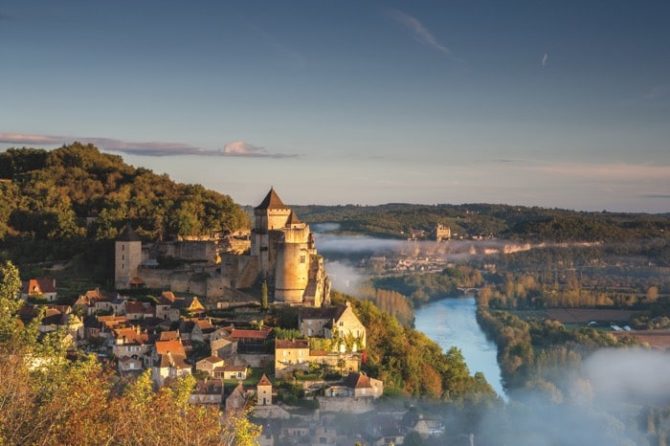

Chloe Govan reveals the Dordogne Valley’s showbiz side, as she explores what’s new for visitors in 2021 in a location where modern and medieval mix…
Dordogne is renowned as the land of 1001 châteaux but for a moment, thanks to an infamous duel, our eyes are fixed firmly on just one.
It’s a languid day in this rural riverside village, with barges gently gliding along the water beneath a majestic clifftop castle, when suddenly two men leap out of the shadows, draw swords and challenge each other to a deadly duel. The scene is the quintessential medieval throwback yet this is no vieux France – this is Hollywood sur Dordogne!
Just a month before lockdown was first announced, back when coronavirus was little more than a distant threat in a scarcely known Chinese city, stars Ben Affleck and Matt Damon, along with a Hollywood cast almost as large as the entire population of the village they were filming in, descended on Beynac-et-Cazenac to start reliving the derring-do of medieval history for Ridley Scott’s The Last Duel.
The original battle of blows that the film is based on took place in 1386, in the midst of the Hundred Years War. A prominent French Knight, Jean de Carrouges, challenged former friend Jacques Le Gris to a duel to the death for the honour of his wife, Marguerite, who claimed that Le Gris had raped her. After courts dismissed the allegations, an increasingly desperate Carrouges headed straight to the king to demand a retrial.
Perhaps unsurprisingly for a teenage boy who’d been plunged prematurely onto the throne at the tender age of 11 and was struggling with the responsibility, Charles VI constructed a quite primitive alternative to a court appeal. His decision? God would decide. If Le Gris won the battle, leaving his opponent fatally savaged, then it would indicate his innocence – and, as a false accuser, Marguerite would then be burnt at the stake. But if Carrouges won, then justice would have been fairly served on a rapist. This was a landmark battle as it would be the last judicial duel ever to be allowed by a French king. Thousands of onlookers attended, including King Charles himself.
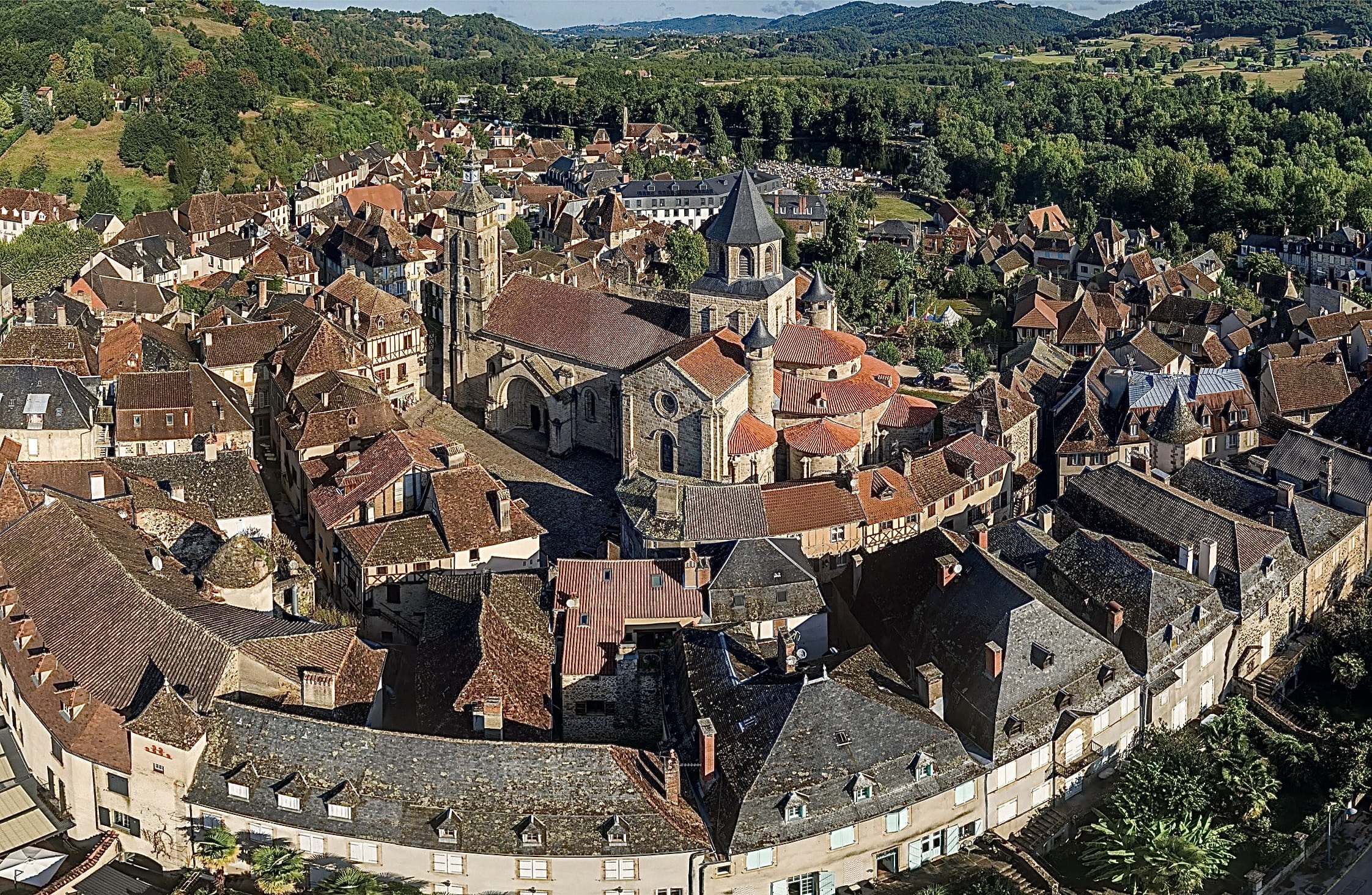
Centre ville de Beaulieu sur Dordogne © Christophe Bouthee of Agence Vent d’Autan – Valle de la Dordogne
Fast forward 600-odd years and this real-life battle is now a film, due for release this October, with Matt Damon as Carrouges, Adam Driver as Le Gris and Jodie Comer as the original damsel in distress, Marguerite.
Ben Affleck takes on the role of the psychotic Charles VI. If you can’t wait for the movie, arm yourself with a copy of the original book by Eric Jager, The Last Duel: A True Story of Trial by Combat in medieval France. The story transports the reader instantly to 14th-century France, and can easily be imagined by any visitor to filming location Château de Beynac today.
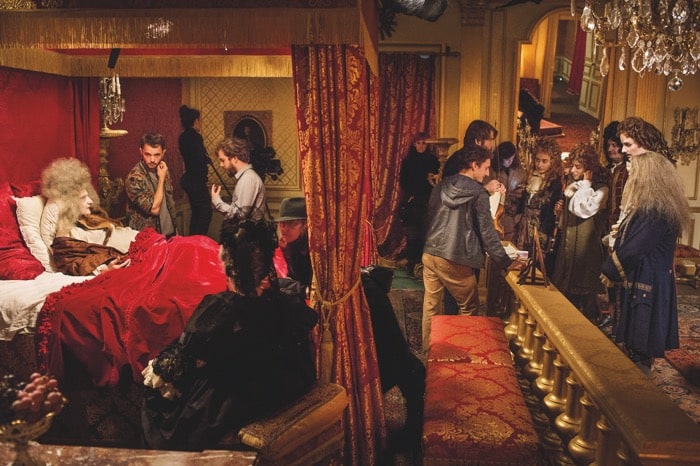
Chateau Hautefort – recreating the scenes of King Louis’s death in a movie simulation. Credit Chateau Hauteford
Perched atop a limestone cliff, the fortress stands out compellingly against the skyline. One only has to take a five-minute drive to the Jardins de Marqueyssac or meander through the sunflower fields nearby to be able to catch that postcard-perfect snapshot of the village and château. On approaching the château itself, its double moats and sturdy watchtowers offer a clue as to its turbulent history in the days when borderlines bridged the gap between warring French and British territories in the Hundred Years War.
Unsurprisingly, the aesthetically mesmerising Dordogne Valley was always a cause of tension, with everyone wishing to possess it as their own. Yet only Richard the Lionheart and Simon de Montfort ever successfully conducted a siege in Beynac. While its château remained in French hands, rival Château de Castelnaud, directly across the riverbank, was British territory. Also worth a visit, it today hosts a medieval warfare museum, with lifelike reconstructions of siege engines and catapults from the days before gunpowder prevailed.
Yet it is Beynac that can boast the movie accolades: before The Last Duel, it played host to casts from La fille de d’Artagnan (Revenge of the Musketeers), Jeanne D’Arc (Joan of Arc), Les Visiteurs (The Visitors) and Chocolat, starring Juliette Binoche. Visitors this year can enjoy a new perspective on this classic site, as one can follow in the footsteps of The Last Duel actors in their recent bid to rediscover medieval France. For example, Jodie Comer was spotted at the local market in nearby Sarlat-la-Canéda. Among her top picks were walnut cakes – a veritable delicacy in a town that once regarded walnuts as so valuable that they could be used as part payment in property purchases. Not enough francs in the bank for that dream château? No problem – the rest could sometimes be settled with nuts.
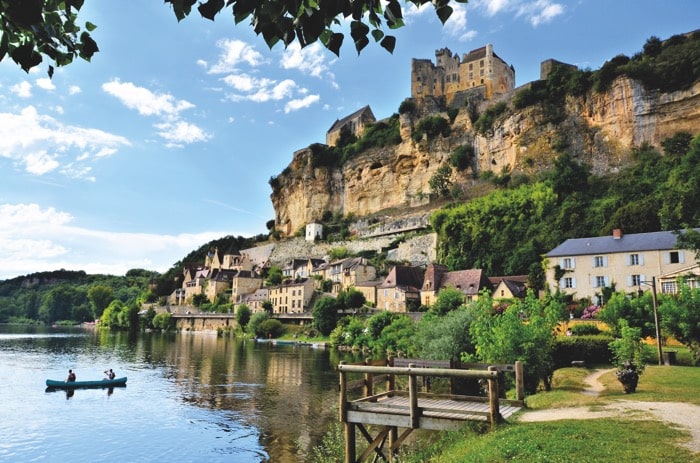
Beynac IMAGES © SHUTTERSTOCK
Then there’s the foie gras and, of course, cheese, from local favourites such as Cabécou to the Rocamadour of the caves in the nearby Lot. In the winter months, when Jodie attended, special markets are devoted to goose and duck products – and we could expect nothing less from a town with a Goose Square (the Place du Marché aux Oies) and its famous sculpture of a trio of geese. For any MasterChef enthusiast who’s self-catering and hoping to try their hand at their own confit de canard, a visit to this market is obligatory.
Otherwise, for those who might not fancy their chances as the next Michel Roux Jr, a visit to hotel- restaurant La Couleuvrine may be preferable. If so, don’t emulate Matt Damon on his visit here by ordering a burger – instead sample some classic regional fare, from black truffle dishes to the guinea fowl stuffed with snails. Dine al fresco underneath the leafy trees in summer, or retreat indoors in cold weather to feast cosily beneath the vintage wooden beams.
It’s possible to rest your head in the same building, or to opt for the more modern Plaza Madeleine hotel, which was privatised for cast members during the filming of The Last Duel. Here old mixes with new, with guests able to enjoy a luxury swimming pool and spa experience inside, before stepping out to explore the medieval town and all that lies beyond.
Ridley Scott was already familiar with Sarlat, having used it as the location for his 1977 movie The Duellists – and it is an excellent stepping stone to the more recent hotspots he used last year.
Lights, Camera, Action
Beynac is right in the heart of the Dordogne Valley’s tourist belt, barely a 15-minute drive from Sarlat, seven minutes from the legendary panoramic views of La Roque-Gageac and a mere five minutes from the hanging gardens of Marqueyssac. The countryside feudal fortress of Château de Fénelon, half an hour from Sarlat by car, is more modest than some in the region, but its interiors traverse a wide range of eras, including Renaissance furnishings and tapestries.
Other filming locations lie a little further afield but are worth the trip as they offer the chance to explore away from the well-trodden tourist trail. One such landmark location for enthusiasts of The Last Duel is the village of Monpazier. Not a famous name, despite its official label as one of the Plus Beaux Villages de France, this stronghold appears almost totally unchanged since it was founded in 1284 in the name of British King Edward I. Every Thursday morning, the familiar ritual of opening the market, which features in the film, is conducted, a tradition that has continued here for more than 700 years. Strolling the streets, admiring the architecture and visiting the Bastideum, a heritage museum dedicated to French bastides, are excellent ways to enjoy the village’s atmosphere.
For those who fancy having a go themselves, the Château de Hautefort, which has a new programme of activities lined up for 2021, invites visitors to try their hand at filming their own movies. Whether your role of choice is director, camera-man, sound engineer or even actor, guests can stand in the very rooms where films such as the Cinderella remake Ever After and La Mort de Louis XIV, the 2016 movie that captured the final two torturous weeks of the king’s life, were made. A special exhibition celebrates the 50 years of cinema shot at the château.
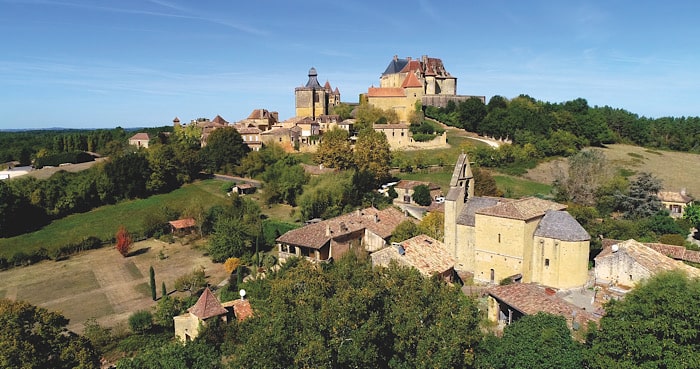
The village of Biron. © SHUTTERSTOCK
There is even a reproduction film set displaying the Sun King’s bedroom from the Palace of Versailles, complete with period furniture. Here, you can enjoy a behind-the-scenes experience, complete with a ghostly wax figure of Louis XIV languishing lifelessly in bed.
The château also has a history of its own worthy of the silver screen. Built atop the ruins of a predecessor almost 1,000 years old, only small remnants of the original remain today, such as the drawbridge and defence turrets that were unsuccessfully used to repel invader Richard the Lionheart back in the 12th century. Amid another siege during the French Revolution, villagers were forced to melt their copper cooking pots and turn them into arms to defeat the enemy. Eventually, in the 1960s, after a fire ravaged the château, the de Bastard family – who, unlike the name might imply, descend from a long line of nobility – helped it rise from the ashes, building it into the tourist attraction that it is today. It also boasts some of the best château gardens in all of south-west France.
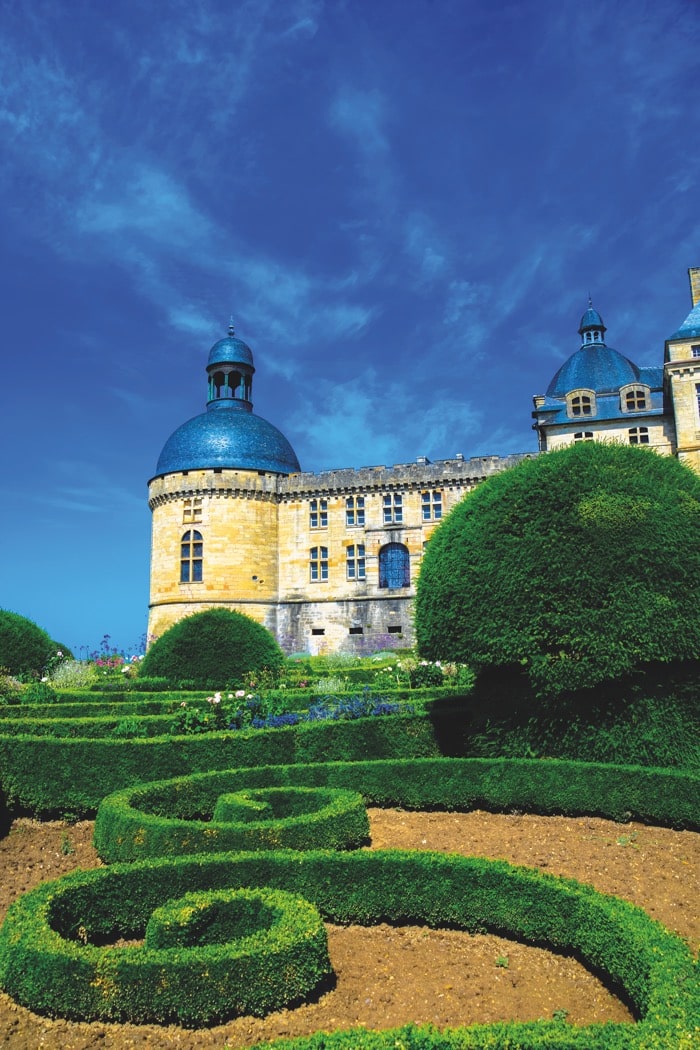
Château de Hautefort IMAGES © SHUTTERSTOCK
Travel Through Time
Meanwhile, further afield in Tursac is the newly opened Château de Marzac. Until recently inaccessible to the public, it is now been inaugurated with a theatrical experience of a different kind – an escape game. The scenario is this: keen hunter Louis de Marzac has murdered a fawn and a curse of retribution has turned both him and everyone else in the château into animals. In just 90 minutes, visitors are challenged to find the secret antidote that returns everyone to human form and administer it quickly before they inherit the curse themselves. Codes must be cracked and puzzles solved but, whether guests win or not, they will regardless be rewarded with an opportunity to explore the stunning estate in the process of trying.
A 10-minute drive from this location is the unmissable troglodyte village of La Madeleine, where visitors can rewind all the way back to the prehistoric era. In the rock shelter Abri de la Madeleine a 20,000 year old artistic carving of a bison licking an insect bite was among several discovered.
Many of the main attractions in this valley are châteaux – and there is an all-new annual festival dedicated to them, Châteaux en Fête. The first festivities were scheduled to begin last year, until the pandemic arrived – but costume balls, fireworks, candle-lit events and musical extravaganzas are all planned for the future, with dozens of participating châteaux opening their doors especially for the events. The party begins this year in June/July.
Francophiles could surely expect nothing less from ‘the land of 1001 châteaux’. Newcomers to the Dordogne who’ve already been château-hopping in the Loire Valley might be tempted to think that after experiencing the latter, they’ve seen it all – but they’d be mistaken. The offerings of the Loire region tend to be comparatively modern, often with palatial interiors, but here in the south-west the château experience is vastly different in flavour. Boasting prehistoric carvings on the rocks below them, some are strikingly authentic windows into a bygone era.
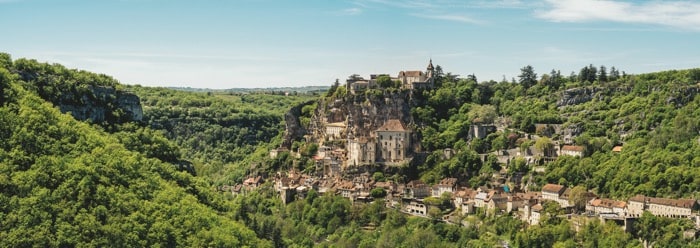
Rocamadour IMAGES © SHUTTERSTOCK
Walking Wonders
If you wish to veer off the château route momentarily and turn to the great outdoors, a brand new hiking route has been introduced for 2021, following in the footsteps of legendary hermit Saint Amadour. Born in 388AD and famed for founding the shrine of Our Lady of Rocamadour, his history stretches back so far that he is even believed to have been a servant of the Virgin Mary. Historians are sceptical about whether the acclaimed hermit truly existed, but devotees point to an ancient tomb found in the 1100s as proof. Whether a believer or not, this exploratory hike across the Dordogne Valley – and beyond too, if you wish – is a great way to soak up the local countryside. Interested travellers can find out more information via the website rando.dordogne.fr.
If days of long walks work up an appetite, Perigourmet could help. Mirroring the vintage atmosphere of the area, local residents Michel and Danu will provide gastronomic tours in a quintessentially French classic car, the Citroën 2CV. New action-packed itineraries stop off at truffle farms, vineyards, walnut orchards, distilleries and other gourmet locations to sample the local produce. Even better than a marketplace experience, the chauffeur can drive travellers direct to the source of each mouth-watering delicacy.
As the unofficial European capital of caviar, it’s unsurprising that Perigourmet offers a tour taking in a caviar farm, although it’s equally possible to reach one yourself, such as Caviar de Neuvic. Farmers here are renowned for their modern ‘no-kill’ method, a cruelty- free way of extracting eggs without harming the sturgeon. It’s tipped to revolutionise the world of caviar – and visitors can even get close enough to a sturgeon themselves for a ‘cuddle’. As bizarre as it sounds, touting the fish as a tourist attraction incentivises keeping them alive, and so plays a small part towards preventing aquatic cruelty. In the gift shop, there are even slabs of charcoal-coloured caviar butter for sale or, for anyone ambitious to create their own dishes, caviar cooking classes beckon too.
Alongside classic attractions such as the Lascaux caves (often dubbed the Sistine Chapel of Prehistory), there are clearly many new and upcoming options for exploration too. For newcomers and repeat visitors alike, there’s no shortage of ways (more than 1001,
for sure) to enjoy a trip to paradise…
From France Today magazine
Share to: Facebook Twitter LinkedIn Email
More in Château, Dordogne, French cheese, French food, French history, luxury hotel
By Chloe Govan
Leave a reply
Your email address will not be published. Required fields are marked *



